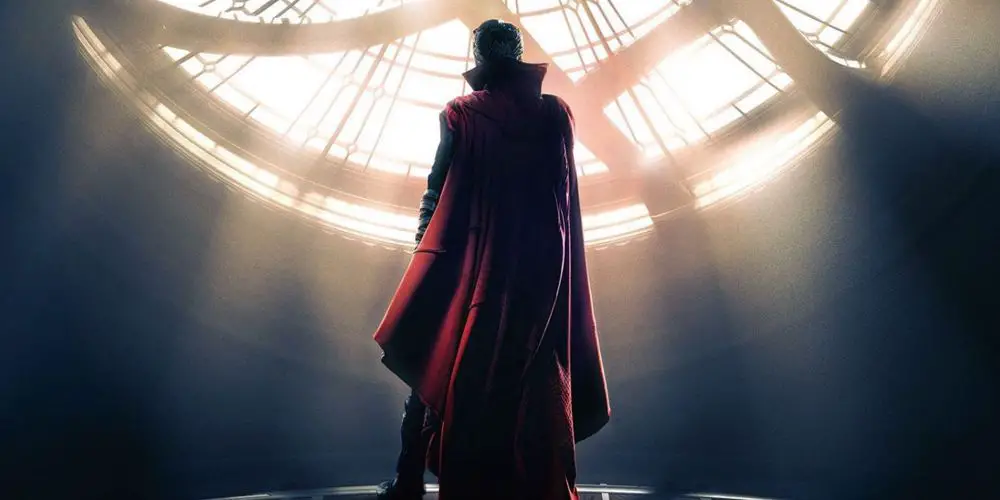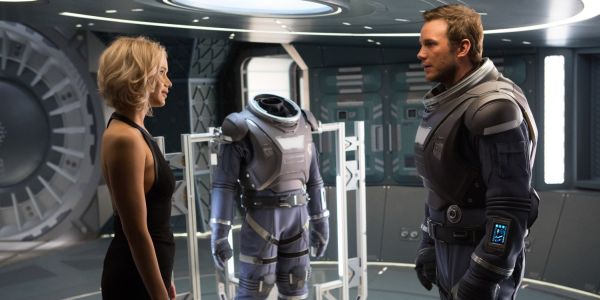Cinematic Advertisements: Film Trailers In The Digital Age

Joseph is an Austro-American media and communications student currently living…
Advertising is one of the driving forces alongside film that is keeping cinemas alive. I analysed how general advertisements are being handled within cinemas in an earlier article titled “Cinematic Advertisements: Forgotten Potential?“. However, there is a second type of cinema ads that play a pivotal role to enhance the cinematic experience: the classic film trailers.
In the digital age, we now have access to film trailers as soon as they are released, and can leisurely watch them anytime. We can watch every single trailer and TV spot that is published without ever having to leave the house. This lead to people fearing that most of the films are already being spoiled through the abundance of trailers before the film even hits theaters.
This begs the question: what role do film trailers still hold in the digital age, and how relevant are they still for cinemas?
The Issue of Oversaturation
Let us start with the problem that most modern trailers face: they give too much away. Films commonly release three key trailers before the complete film is released. The first is a teaser trailer that entices the audience of what type of film they can expect. It includes some key sequences and adds some minor hints at what will happen during its runtime.

Next, the actual “first” trailer is released, which showcases the basic story line of the film, or at least hints at what will potentially happen. Finally, these are topped off with a trailer that combines both elements. It showcases more of the previously teased key sequences, while giving a clearer picture of the film’s story.
To give an example how even the first trailer could potentially give away more than it should, we will look at the recently released trailer for the film Passengers. For most, his trailer is the first glimpse of the film. As I mentioned earlier, normally the first trailer gives a slight hint of what could potentially occur during the film’s story. However, this trailer pretty much gives away the biggest twist of the story with just one sentence, and we’ve only just seen these few minutes of the film in this first trailer. Passengers will get three more trailers and up to a dozen TV spots, all of which are available online at any given time.
Just one trailer could give away a tad too much, but studios always release multiple trailers, so spoilers are hard to avoid. While there is always the classic sentiment “you don’t have to watch the trailers”, curiosity is part of our nature, and we at times cannot help ourselves. Moreover, when we go to the cinema, we see them whether we want to or not.
Naturally, trailers have been done for years, and they probably will not go away anytime soon, but it might be that, simply, too many trailers are released for one film. Yet, I did mention that usually there are three “main” trailers (if one ignores the newest trend of a few second teaser trailer for the actual teaser trailer) – so what else is there?
Digital “TV” Spots
Television has become more and more popular in recent years, through critically acclaimed shows such as Game of Thrones, Breaking Bad and more. Film studios, as the larger, older cousins of TV, wants to push its own products through the new medium. Shortened trailers are broadcast with, or sometimes without, new footage in the form of one-minute TV spots.
Considering the vast number of networks that can showcase these spots, and the fact that the same spot is shown repeatedly for a few months, it would get boring with the same footage. To effectively avoid this issue, companies create multiple spots to advertise. To give an example, Marvel Studios recently released their first TV spot for their upcoming Doctor Strange film.
This short TV spot includes more footage and adds an additional joke at the end, which has become a common practice for Marvel Studios’ trailers ever since the “Star-Lord Who?” joke for Guardians of the Galaxy. The TV spot highlights the important story beats that you can expect.
Every film is handled differently, but there have been examples when up to 16 different TV spots with exclusive footage are released before a film. Even if they will never truly show the entire film, some of the best parts have often already been shown. This practise is especially dangerous when it comes to comedies, as trailers and spots could give away the best jokes.
Current TV spots do not show any adaptation to the modern era. They are pushed out to reach the general consumers who may not use the Internet every day, and are not as well-informed as those who do. TV spots are meant to entice people to watch the film, but as they are also available online, there is no real purpose but to offer more footage. Maybe companies should stop publishing TV spots online, where they ironically are still described as “TV” spots.
What About Cinemas?
Trailers in cinemas are not as important as they once were. Trailers are shown before specific films to create a synergy effect, as they share a similar audience. However, as I mentioned previously, all trailers are available online, which makes their appearance within cinemas less impactful. Maybe smaller films will get more attention, as they are not as heavily advertised outside of the cinema, but nonetheless the audience will be more focused on seeing the main film. It’s similar to the issue that I noted in my previous article about cinema ads in general.

Is there a way to fix this problem? The keyword here is “exclusivity”, and it is something that many film companies have forgotten. They claim to have adjusted to the modern era, but sometimes it’s better when certain content is only available on a certain medium, as to promote exclusivity. Trailers that show exclusively is a great example.
Conclusion
Marketers should show flexibility in how they handle the issues of trailer advertising. If film companies are going to overuse their footage, it might be a good idea to spread out the content and its availability. Avoid the repetitiveness and add more value to film trailers by limiting specific trailers to cinemas, online or television.
Offer the first look at a film online, make TV spots to draw attention, and last, but certainly not least, allow cinemas to immerse the viewer in the trailer of the film. Establishing a strong synergy across media could give cinema a bright new future.
What is your opinion on how film trailers are being handled? Do you agree or disagree with my views? Do you have any ideas on how they can be utilised in the future?
Does content like this matter to you?
Become a Member and support film journalism. Unlock access to all of Film Inquiry`s great articles. Join a community of like-minded readers who are passionate about cinema - get access to our private members Network, give back to independent filmmakers, and more.
Joseph is an Austro-American media and communications student currently living in Austria, who grew up with film most of his life. Having won a new appreciation of cinema as an art form and as an industry, he aims to learn as much about it as he can.












